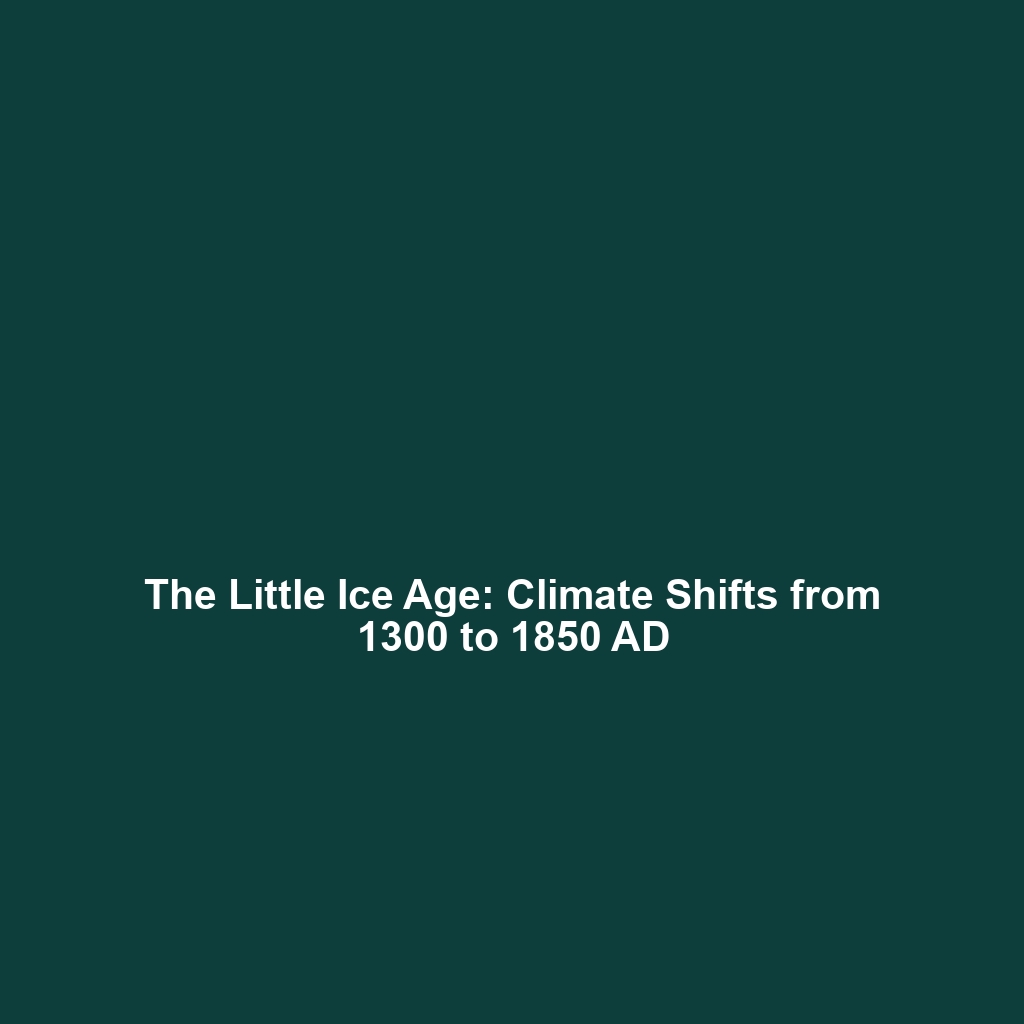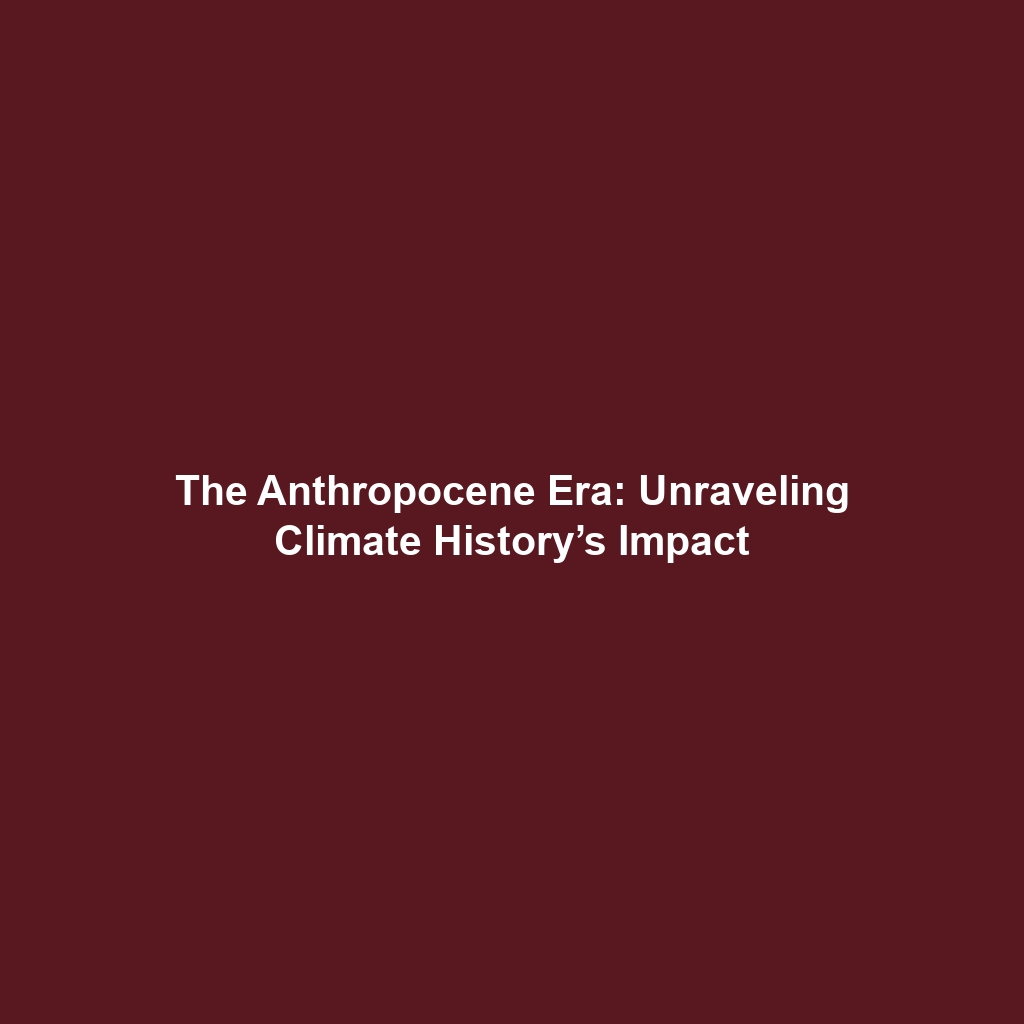The Last Glacial Maximum (LGM) and Its Impact on Climate History
Introduction
The Last Glacial Maximum (LGM), which occurred approximately 20,000 years ago, is a pivotal event in climate history. During this period, extensive ice sheets enveloped much of North America and Europe, profoundly influencing global climatic patterns. Understanding the LGM is crucial for assessing past climate conditions and predicting future climate changes. This article will delve into the significance of the LGM within the broader context of climate history, highlighting its relevance and implications.
Key Concepts
Understanding the Last Glacial Maximum
The LGM marks the peak of the last glacial period when the Earth’s climate was significantly cooler than it is today. Major concepts include:
- Ice Sheets: Massive glaciers expanded over vast regions, leading to lowered sea levels.
- Climate Change: The transition from glacial to interglacial periods plays a key role in understanding current climate dynamics.
- Geological Impact: The LGM shaped the geological features of North America and Europe.
These elements fit into the study of climate history by providing insights into earth system responses to climate variations.
Applications and Real-World Uses
The Last Glacial Maximum has several notable applications in the field of climate history:
- Climate Modeling: Scientists use LGM data to improve climate models, enhancing our understanding of current trends.
- Carbon Cycle Studies: Insights from the LGM inform our comprehension of historical carbon cycling, proving essential for future predictions.
- Archaeological Studies: The environmental conditions of the LGM are vital for understanding human adaptation and migration patterns during this period.
These applications underline how the study of the LGM continues to influence modern climate history.
Current Challenges
While significant progress has been made in studying the Last Glacial Maximum, several challenges persist:
- Limited geological records can complicate reconstructing past climate conditions accurately.
- Difficulty in correlating LGM periods with current climate change due to the complex nature of climate systems.
- Access to remote and ice-covered areas for the collection of direct evidence.
Addressing these challenges of the LGM is essential for advancing our understanding of climate history.
Future Research and Innovations
Recent innovations in technology have opened new avenues for investigating the Last Glacial Maximum:
- Advanced Modeling: Next-gen climate models that incorporate machine learning to simulate historical climate scenarios.
- Field Studies: Enhanced remote sensing technologies to analyze ice cores and sediment samples from previously inaccessible regions.
- Multidisciplinary Approaches: Collaboration between climatologists, geologists, and archaeologists to provide a comprehensive view of historical climate dynamics.
Conclusion
In conclusion, the Last Glacial Maximum (LGM) is a key component in understanding climate history. From its significant impacts on global climate patterns to its contemporary applications, the LGM remains a subject of intense study and relevance. For those interested in further exploring how past climate conditions influence current climate science, consider delving into related topics such as climate modeling or glacial geology.

